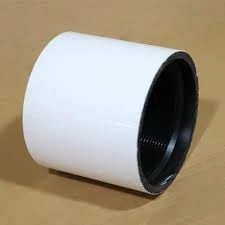- Afrikaans
- Albanian
- Amharic
- Arabic
- Armenian
- Azerbaijani
- Basque
- Belarusian
- Bengali
- Bosnian
- Bulgarian
- Catalan
- Cebuano
- Corsican
- Croatian
- Czech
- Danish
- Dutch
- English
- Esperanto
- Estonian
- Finnish
- French
- Frisian
- Galician
- Georgian
- German
- Greek
- Gujarati
- Haitian Creole
- hausa
- hawaiian
- Hebrew
- Hindi
- Miao
- Hungarian
- Icelandic
- igbo
- Indonesian
- irish
- Italian
- Japanese
- Javanese
- Kannada
- kazakh
- Khmer
- Rwandese
- Korean
- Kurdish
- Kyrgyz
- Lao
- Latin
- Latvian
- Lithuanian
- Luxembourgish
- Macedonian
- Malgashi
- Malay
- Malayalam
- Maltese
- Maori
- Marathi
- Mongolian
- Myanmar
- Nepali
- Norwegian
- Norwegian
- Occitan
- Pashto
- Persian
- Polish
- Portuguese
- Punjabi
- Romanian
- Russian
- Samoan
- Scottish Gaelic
- Serbian
- Sesotho
- Shona
- Sindhi
- Sinhala
- Slovak
- Slovenian
- Somali
- Spanish
- Sundanese
- Swahili
- Swedish
- Tagalog
- Tajik
- Tamil
- Tatar
- Telugu
- Thai
- Turkish
- Turkmen
- Ukrainian
- Urdu
- Uighur
- Uzbek
- Vietnamese
- Welsh
- Bantu
- Yiddish
- Yoruba
- Zulu
bull plug vs hex plug
Bull Plug vs Hex Plug Understanding the Differences and Applications
In the world of plumbing and fluid mechanics, various types of plugs are used for sealing, capping, and threading applications. Among these, the bull plug and hex plug are two commonly utilized types, each with its own unique features, advantages, and applications. Understanding the differences between these two types of plugs is essential for professionals in various industries, including plumbing, manufacturing, and construction.
What is a Bull Plug?
A bull plug is a type of threaded plug that typically features a rounded, bulging end. This design is meant to facilitate easy installation and removal, as it can be grasped and turned with minimal effort. Bull plugs can be made from various materials, including brass, stainless steel, and plastic, providing options for different applications ranging from water supply systems to industrial equipment.
One of the primary advantages of a bull plug is its ability to create a smooth, sealable surface that prevents leaks in piping systems. The rounded design also minimizes the risk of damage to threads during installation and removal, which is particularly beneficial in high-pressure environments. Bull plugs are often used in applications requiring quick access, such as in pressure testing. The ease of use and leak-proof capabilities make bull plugs an excellent choice for both automotive and plumbing industries.
What is a Hex Plug?
In contrast, a hex plug features a hexagonal head, which allows for wrench tightening and loosening. This design is specifically engineered to handle higher torque during installation, making it suitable for more demanding applications. Hex plugs are also made from a variety of materials, including cast iron, steel, and aluminum, which can be chosen based on the specific needs of the job.
Hex plugs are favored in applications where a secure seal is critical, such as in gas lines, hydraulic systems, and mechanical assemblies. The hexagonal shape provides larger surface contact when using tools, which helps avoid stripping of the hex due to excessive force. Additionally, hex plugs may sometimes come with additional sealing features like O-rings or gaskets to provide enhanced leak protection.
bull plug vs hex plug

Comparing Bull Plug and Hex Plug
Ease of Use Bull plugs often edge out hex plugs in terms of user-friendliness, particularly for quick applications or where space constraints make it difficult to use a wrench. The rounded design allows users to turn them by hand or with simple hand tools, making them ideal for situations where tools may not be readily available.
Torque Capacity Hex plugs excel in applications requiring significant torque. The hexagonal feature enables the use of larger wrenches, making it easier to achieve tighter seals under high-pressure conditions. This makes hex plugs more suitable for heavy-duty environments than bull plugs.
Application Suitability Bull plugs are widely used in plumbing and automotive applications to close off pipe ends or provide access for testing. Hex plugs, on the other hand, are more commonly employed in industrial settings, where secure, high-pressure sealing is necessary.
Conclusion
When deciding between bull plugs and hex plugs, it is crucial to consider the specific requirements of the application at hand. Bull plugs offer ease of use and are ideal for applications requiring frequent access or quick installations. In contrast, hex plugs provide a higher torque capacity and are more suited for applications demanding robust sealing solutions under pressure.
In summary, both bull plugs and hex plugs play vital roles in fluid sealing and piping systems, but their suitability depends on the context of their application. Understanding the features and advantages of each will enable professionals to make informed choices, ensuring optimal performance and reliability in their projects.
-
Tubing Pup Joints: Essential Components for Oil and Gas OperationsNewsJul.10,2025
-
Pup Joints: Essential Components for Reliable Drilling OperationsNewsJul.10,2025
-
Pipe Couplings: Connecting Your World EfficientlyNewsJul.10,2025
-
Mastering Oilfield Operations with Quality Tubing and CasingNewsJul.10,2025
-
High-Quality Casing Couplings for Every NeedNewsJul.10,2025
-
Boost Your Drilling Efficiency with Premium Crossover Tools & Seating NipplesNewsJul.10,2025







